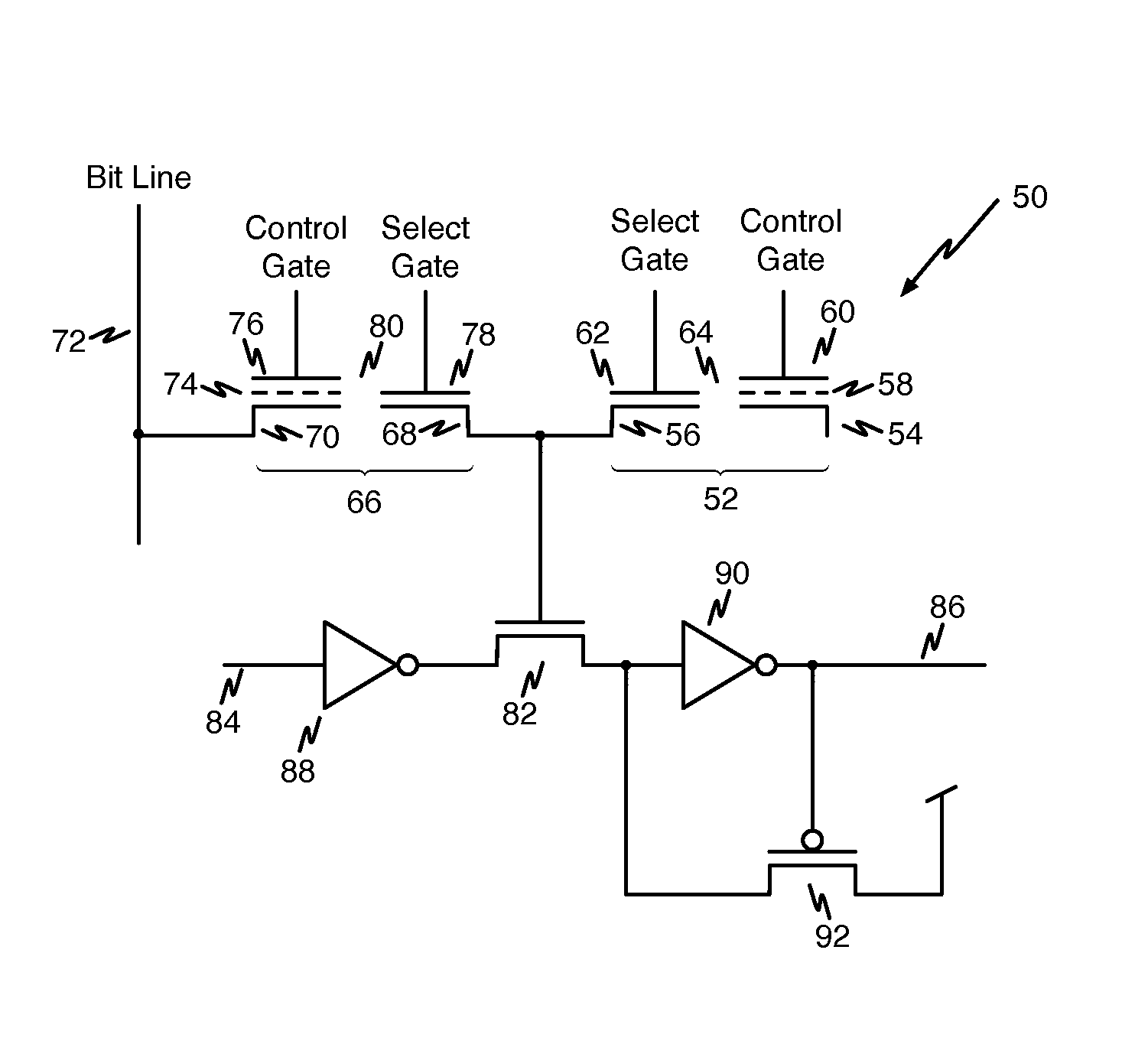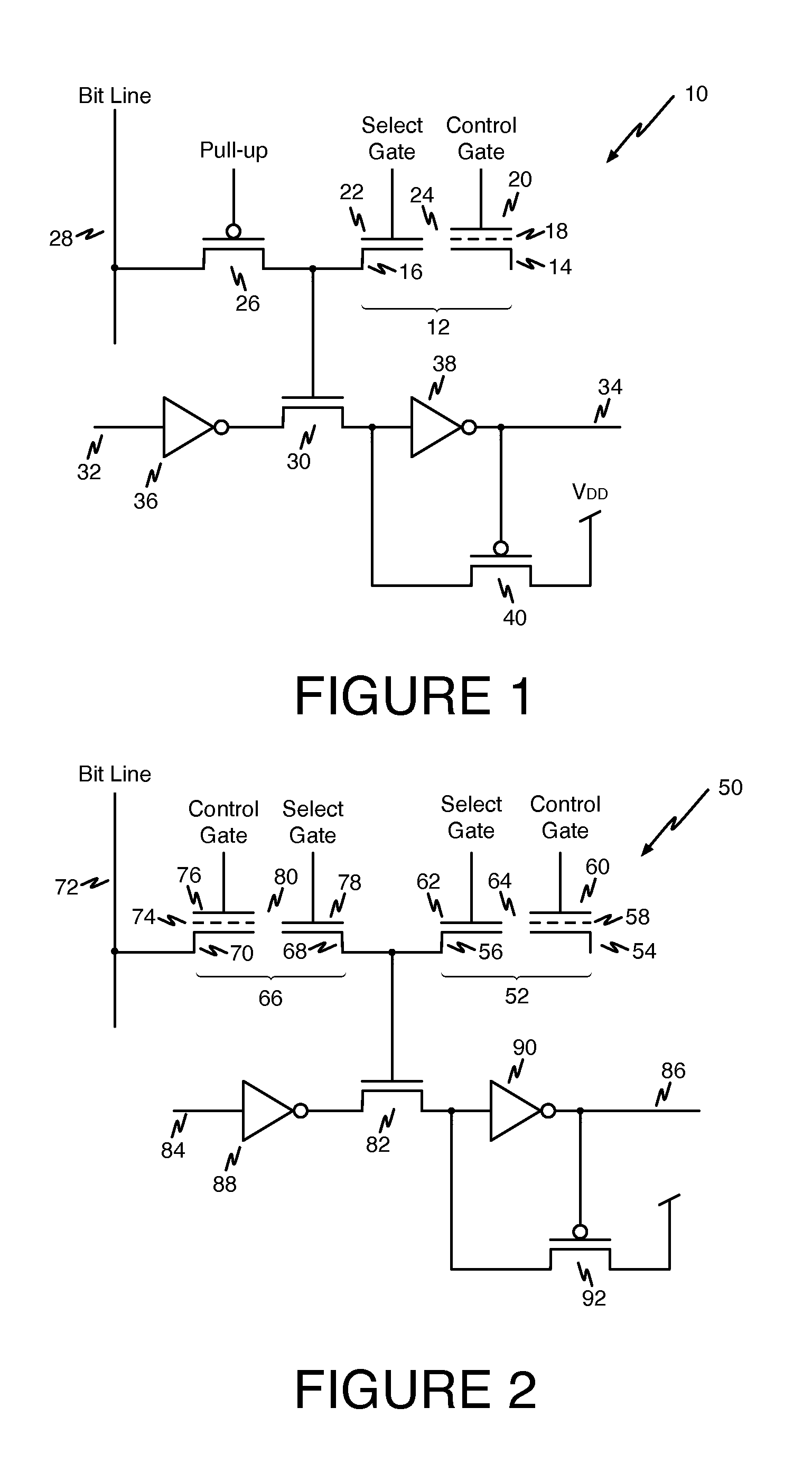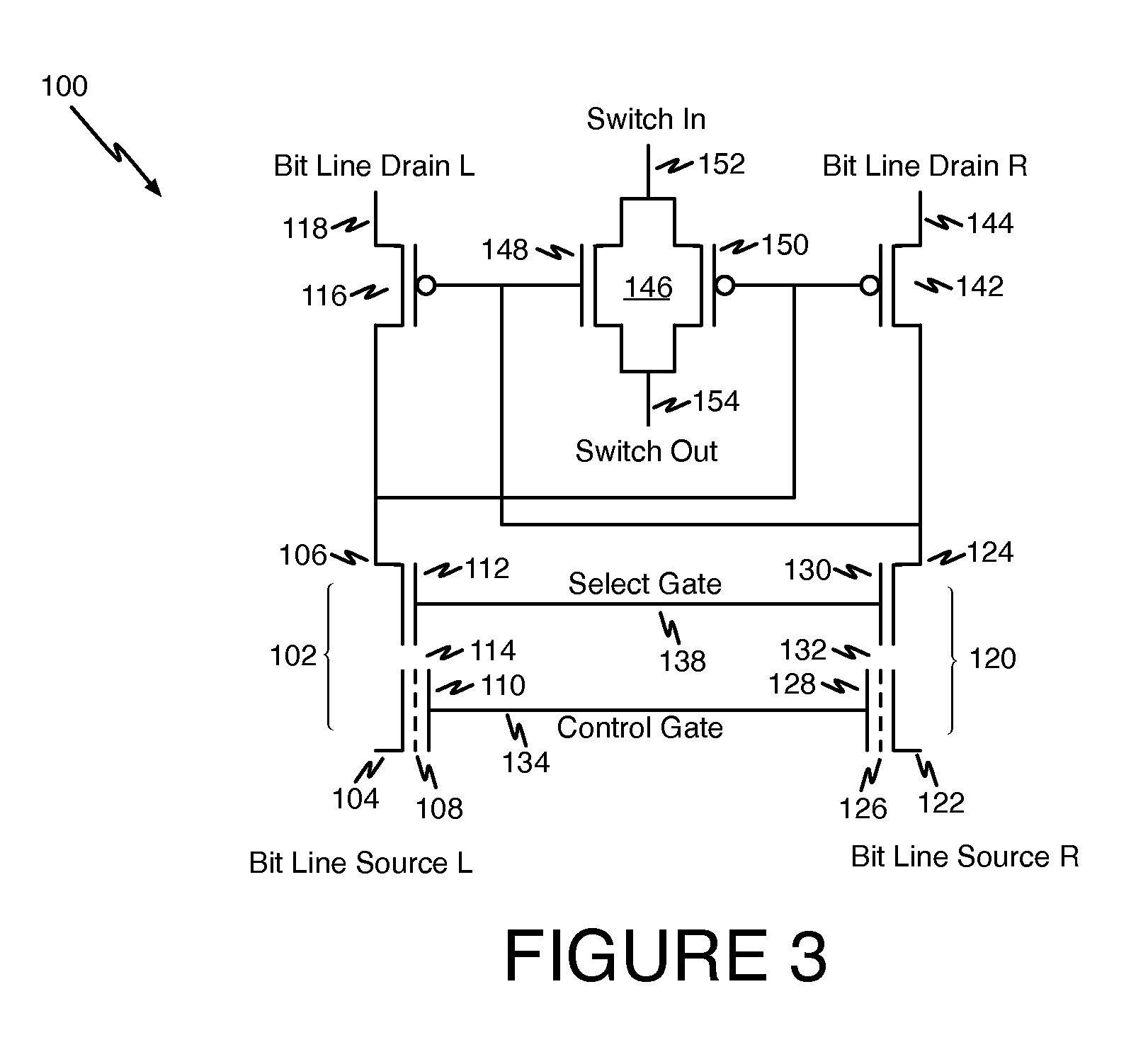Split gate memory cell for programmable circuit device
a memory cell and circuit device technology, applied in the field of memory cells, can solve the problems of significantly higher voltages that are necessary to program and erase the memory device, subject to the art solution, etc., and achieve the effects of compact cell size, reduced stand-by leakage, and low on-state switch impedan
- Summary
- Abstract
- Description
- Claims
- Application Information
AI Technical Summary
Benefits of technology
Problems solved by technology
Method used
Image
Examples
Embodiment Construction
[0013]Persons of ordinary skill in the art will realize that the following description of the present invention is illustrative only and not in any way limiting. Other embodiments of the invention will readily suggest themselves to such skilled persons.
[0014]One of the disadvantages that prior-art solutions are subject to results from the fact that the voltages that are necessary to program and erase the memory devices are significantly higher than the voltages encountered by the devices during normal circuit operation. Because of the presence of these higher voltages during programming and erasing of the memory cells, the other transistor devices associated with the memory cells have to be fabricated to withstand these higher voltages.
[0015]Referring first to FIG. 1, an illustrative split-gate memory cell 10 according to a first aspect of the present invention is shown. Memory cell 10 includes a split-gate non-volatile memory transistor shown at reference numeral 12. Split-gate non...
PUM
 Login to View More
Login to View More Abstract
Description
Claims
Application Information
 Login to View More
Login to View More - R&D
- Intellectual Property
- Life Sciences
- Materials
- Tech Scout
- Unparalleled Data Quality
- Higher Quality Content
- 60% Fewer Hallucinations
Browse by: Latest US Patents, China's latest patents, Technical Efficacy Thesaurus, Application Domain, Technology Topic, Popular Technical Reports.
© 2025 PatSnap. All rights reserved.Legal|Privacy policy|Modern Slavery Act Transparency Statement|Sitemap|About US| Contact US: help@patsnap.com



